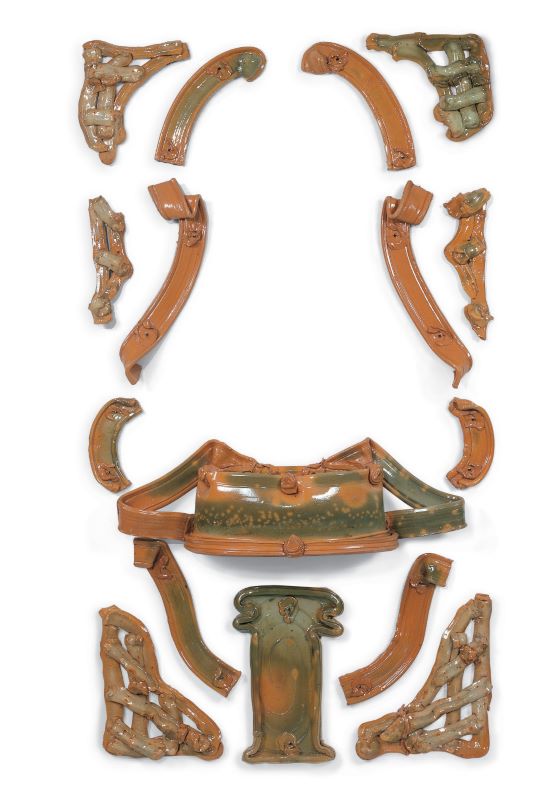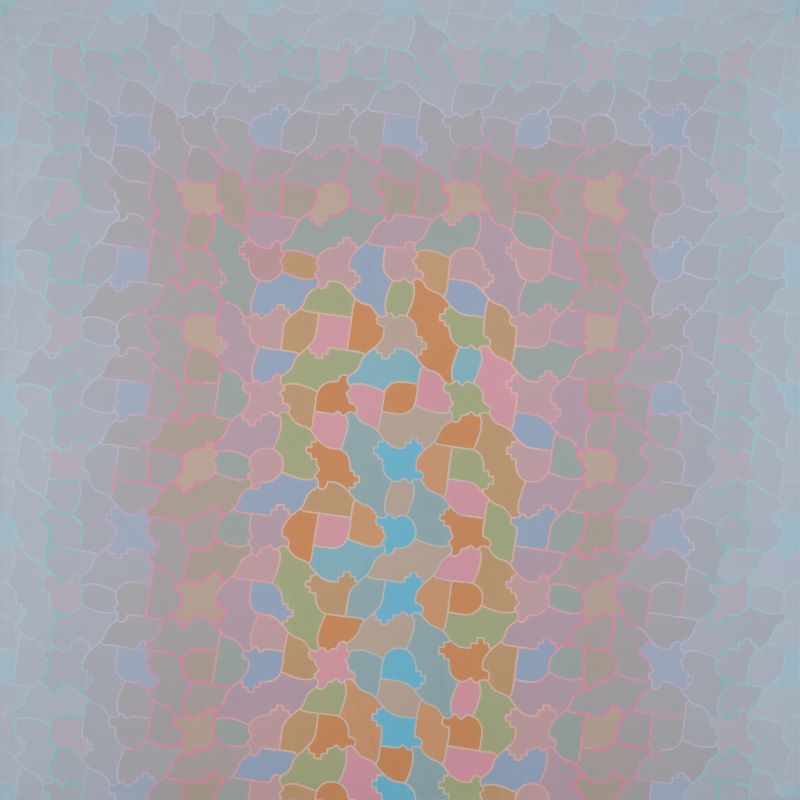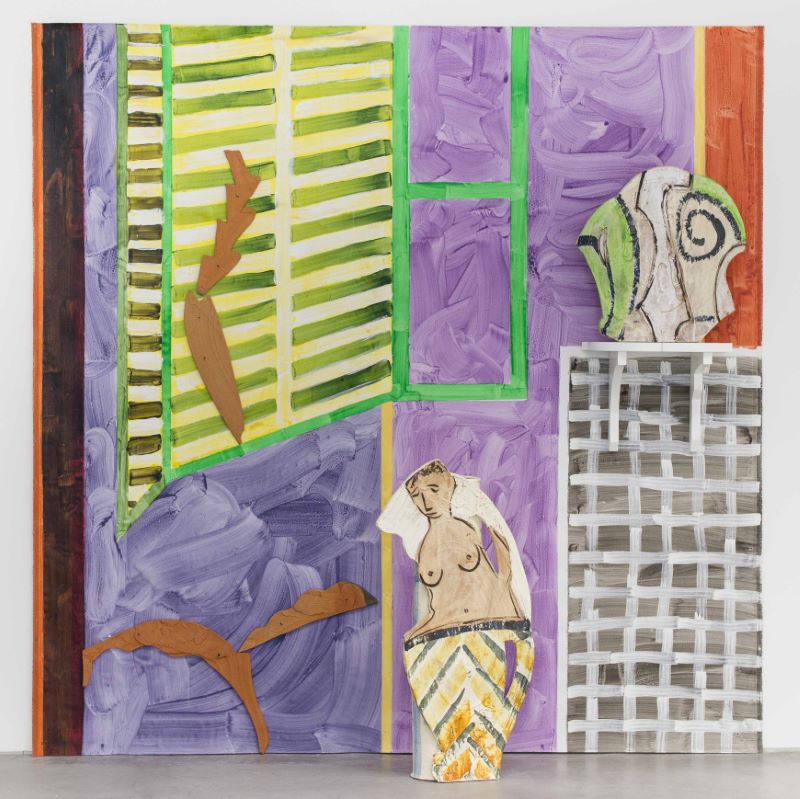Balustrades and architectural influence: "Betty Woodman and George Woodman," Charleston, East Sussex, England, 2023

March 25, 2023 through September 10, 2023
Charleston
charleston.org.uk
The exhibition at Charleston explores ways that Betty Woodman’s and George Woodman’s shared life and experiences over more than six decades found expression in the works that emerged from each artists’ studio. Both artists explored and constructed space through painting, ceramics and photography.
In the 1980s, George’s rigorous pattern paintings based in geometric abstraction began to incorporate more representational motifs, including figures, flowers and architectural details. This resulted in a complex layering of forms and colors into foreground and background. A balustrade—a railing defined by its architectural structure as well as the spaces partially visible beyond it—proved an ideal way to paint this dynamic between two- and three-dimensions, as seen in Low Balustrade Screen or Garden Balustrade Screen (1981), currently on view at Charleston. Additionally, by constructing this series of five paintings as a folding screen rather than a flat work for the wall, George suggests a space in front and behind and in relationship to the viewer.
Betty, too, carefully observed the architectural details of balustrades, and specifically the vase-shaped silhouettes that the spaces between railings suggested to her. She explored this relationship between positive and negative space in ceramics, beginning a decade later, in her Balustrade Relief Vases, one of which is on view at Charleston alongside George’s painting. This series of works also provided a way for her to make sculpture occupy the wall—a painter’s space—which is further emphasized by the way she painted individual forms to a construct a total composition.
Over the course of their long careers, architectural allusions – framing doorways and windows, merging interior and exterior, and constructing and collapsing space–remained preoccupations for both artists. This is evident in works included in the exhibition at Charleston, and others pictured here from the Foundation’s collection.
To learn more about the exhibition, click here.



-48.jpg)





